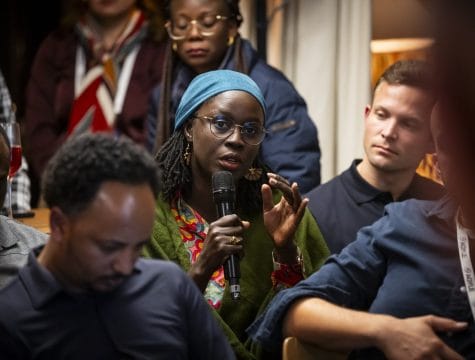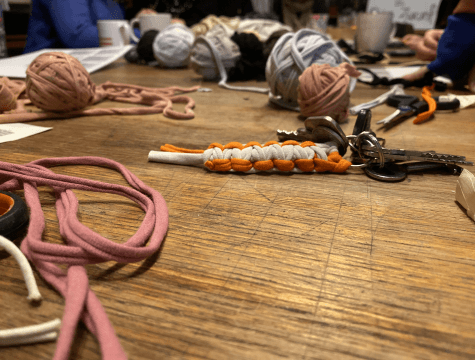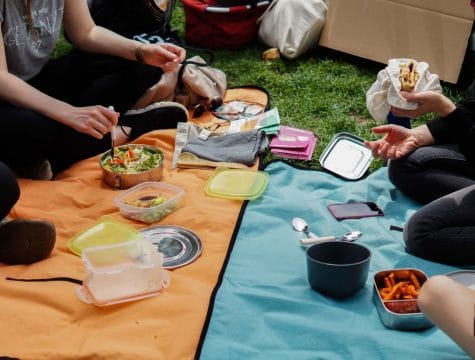Flexible packaging? Rigid packaging? Transportation packaging? Food-contact related packaging? – It is not easy to bring this topic under one term, even though we call all it “packaging.”
On February 26th, Circular Berlin together with RawParadise and Project Together hosted our first event in 2020, where we shared our knowledge on the topic of plastic packaging.
In the last few years, plastic packaging has been all over the media due to its devastating environmental impacts. Why is it that we have a system where a product that was designed for so many positive sustainability attributes (to be durable, lightweight, etc.) could turn out to be so damaging? What are the regulatory limitations and how can a circular economy approach help overcome current challenges?
Plastic packaging: legislation and market limitations
In 2019, some of our members were part of a plastic research project led by TU Berlin, funded by the Climate-KIC program. The project focused on the role of information flow in the plastic packaging value chain. We need to keep in mind that packaging is a unique product, which is made to preserve, combine or transport other products.
‘Packaging’ means all products made of any materials of any nature to be used for the containment, protection, handling, delivery and presentation of goods, from raw materials to processed goods, from the producer to the user or the consumer.
In 2019 in Germany, plastic packaging was the 3rd most common packaging waste type after paper and wood. But the packaging industry is the number one driver of demand for synthetic polymers: low and high-density polyethylene (LDPE, HDPE), polypropylene (PP) and polyethylene terephthalate (PET) are the most commonly used materials for packaging production.
These materials are mostly standardized, and have a relatively low price point, which makes them attractive to packaging producers.
Packaging legislation in Germany (and in the EU) can be divided into two parts: rules about everything that happens before the packaging’s use and rules about how to deal with it after use. That is why it is very important to consider who the key stakeholders are in both phases:
You can find the full report on the legislative overview here.
But in the nutshell, we found that the barriers for the prevention of plastic packaging waste on the legislative level are:
- The lack of a holistic view through legislation on the full plastic packaging value chain, starting from materials until end of life
- Chemical and hygiene regulations–a barrier for implementation of particular waste prevention measures
- EPR (Extended producer responsibility) schemes that reduce the incentive to enact prevention measures, such as reuse / refill, which would avoid producing the packaging in the first place
Through interviews with diverse industry players, we identified three key approaches for waste prevention of plastic packaging:
I. Decrease the amount of packaging in the product
The approach with packaging reduction could be achieved through less production of the packaging components to reduce the unnecessary amount of packaging (overpackaging) and the use of fewer material types. This would lead to reduced material use.
Alternatively, we can focus on reducing production of the items that require packaging, targeting the problem of overconsumption. Decreasing consumption demand for unnecessary products will lead to less packaging production. Currently, this strategy is mainly popular only among consumers and very conscious packaging producers, the one who focuses e.g. on reusable packaging.
II. Material substitution
Material substitution was often named as prevention strategy by our interviewees, and it is currently gaining importance among plastic packaging producers. One approach that was mentioned is the material substitution through non-plastic or non-petroleum-based plastic. The interest in bioplastic use was always mentioned as a prevention method. The increased use of the recycled content in the packaging production was also listed as a high priority for some producers.
In addition, interest and demand for this approach is also coming from product brand owners who are increasing pressure on packaging producers to be innovative with the selection of the materials. Increasing use of recycled content in the packaging links material producers with the recycling sector.
III. Redesign of the packaging
The most prominent and acceptable approach is the redesign of the packaging. Two design strategies for the circular economy were named: Design for Reuse and Design for Recycling. In the case of Design for Reuse, the objective is to bring a multi-use (reusable) product on the market, which preferably is made of durable materials. Design for Recycling approach should correspond to the conditions for product end-of-life treatment in the area where it is disposed. This approach requires the involvement of the user: the user must know how to properly dispose of the packaging so that it can be recycled.
Each prevention strategy will impact various business models and stakeholders differently.
Decentralized recycling approach – new potential from bottom up innovations
Prevention strategies are only one side of the story–recycling plastic is another. Our friends at RawParadise shared the decentralized solution they are developing called “Recycling on the spot.” Currently, the project is targeting high performance polymers, with mobile machines that make it possible to recycle materials right where they would have been thrown away. We believe it is only the beginning of their journey and there is more to come. RawParadise is one of the selected projects from ProjectTogether’s soulincubator (see details of their work here), a program that supports entrepreneurs working on solutions to the plastic waste crisis.
The evening’s input was followed by interesting debates and speed pitches, where we learned about several projects just getting started. Check them out:
Zero Waste Era – Mark presented his solution for refillable packaging for cosmetic and hygiene products like shampoo and soap, where the refills will be delivered by bike to your home.
Leef – We also learned about alternative material packaging coming from this German start-up that offers disposable tableware and packaging made from palm tree leaves.
Kanban Initiative – This project aims to prevent diverse packaging in Germany in the first place, which is based on the reusable deposit based system.
For more information about plastic and packaging reach out to our experts Marilu Valente and Dina Padalkina.




